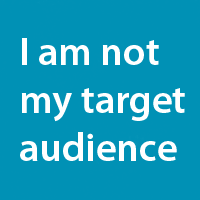Five big reasons your fundraising results could be better
There are hundreds, perhaps thousands, of tactics we can apply to get better fundraising results. But what are the big things that make the really big differences?
- Written by
- Rachel Beer
- Added
- July 24, 2016

1. You’re not speaking to the right people
I once worked with a large charity that had been advised the answer to its declining income was to ‘mail more people’. As a result, it was spending vast sums on mailing people that never donated. It seemed logical to the person that gave the advice, and to the charity, but the only people profiting from it were the charity’s suppliers
For many charities, the bigger risk is approaching the wrong audiences to attract new donors. Few things upset me as much as hearing from small charities who used their small budget for donor acquisition on activity that might have worked had they only targeted audiences more likely to support them, or had a more robust process to help them identify who those people were.
No matter how good your appeal or campaign, if you’re only sharing it with people that have no interest in it, who can’t afford to give, or not enough of your audience fits these basic criteria your return on investment is going to suffer.
So, make sure you segment your warm audience enough to see where your income is coming from and where you are expending budget for no return. Test to establish what you can tweak to bring marginally unprofitable segments into profit – if they’re big enough to warrant it. And, if you still have unprofitable segments, think about where you could invest that budget where it would work harder.
For acquisition, digital channels are great for testing on a small scale, letting you establish the audiences that will offer you the best return, and the messages they respond best to, before you commit larger budgets.
2. It’s all about you

If you’ve ever decided to beef up on writing better fundraising copy, you’ll probably have read several blog posts recommending less of the ‘I’, ‘me’ and ‘we’ (the organisation) and more of ‘you’ (the donor). Whilst this is good advice, there’s so much more to writing copy that engages people than being mindful about your use of pronouns. And employing tactics to create an impression that you care is never going to be as effective as changing your philosophy at its core.
Most fundraisers will nod along to talk of donor-centric fundraising but there is little in the majority of mass-market fundraising that feels – on the receiving end – like it reflects this ideal. It’s more likely to reflect ‘the brand’, which too often reads as if the message has been put through a corporate filter and no longer speaks to people in the way that is meaningful to them.
But you won’t find me bitching about the brand by the water cooler. Having delivered and been involved in brand development projects, I have a great respect for brand done well and I need no persuasion of the important role it has to play. If the process has been conducted robustly, and the audience insight is good, brand should, after all, reflect what stakeholders feel about your mission and vision, so your messages should resonate strongly with them as a result.
The problem is not brand per se, it’s the way organisations work with and think about it that ends up taking the intimacy and nuance out of communications. When brand is treated as a checklist of things to include, or not, rather than guidelines to inform – and when people are negative towards brand because it feels like it’s being applied in that way – the danger is that it stops some good things happening to begin with, or that they are edited out later and replaced by the same old form of words or organisation speak. Your communications become rather bland and samey and it affects results.
You and your donors have a shared vision and they are giving because you are enabling them to achieve some of the changes they would like to see in the world. Speak to them in a way that acknowledges, respects and values this, in terms that mean something to them
3. You’re not showing an interest in them
Over the years, I’ve come across many charities collecting data from their donors, yet not doing anything meaningful with it. I always think about the implications of asking supporters to tell us anything, because it must set an expectation in them that we’re going to do something with, or as a result of, that information so I feel it’s important we live up to that.
At the very least, we should be making our communications sympathetic to information supporters have shared with us. Ideally using it – and whatever insight it may provide – to make communications more interesting and relevant to them.
If you’re not going to do that, why ask them to tell us things about themselves in the first place? In that case, it might even be better not to.
If you adopt a more donor-centric philosophy, you should naturally also be extending this to communication at individual donor level – which is what I’m referring to specifically with this point.
4. You’re assuming…

…that they’re interested, that they get it, that you don’t have to explain or make the case, that they remember who you are, that they think your organisation is great, that they will give…
As a general rule of thumb, I think it’s worth imagining that the people you are aiming to engage couldn’t be less interested in you or what you want them to know. Yes, even the ones that have donated to you before. And, yes, I know this isn’t necessarily entirely true, but bear with me…
A large proportion of the people that charities tend to call ‘our donors’ are usually people that have given them a donation once, at some point. They no doubt cared enough to make that donation but if it’s the only one they’ve made, despite you sending them 30 appeals since, I won’t assume that they are starting from a place of great commitment, or understanding. And I don’t imagine that they would identify themselves as one of ‘your donors’, even if someone asked them.
Assuming people are interested as my starting point won’t push me to create the strongest and most effective fundraising I’m capable of. So, even though there are donors within every file who care passionately, I prefer to approach the development of any fundraising by designing it to work for the least engaged audience cohorts – which will just achieve even better results from the most engaged supporters. Win-win.
If you are genuinely donor-centric, you should instinctively be approaching everything from the point/s of view of the people you are seeking to engage. But it is so easy to let yourself slip, subconsciously, into assuming your audience thinks your appeal is as important as you do. It’s human nature to see things through our own lens and forget that our donors and potential donors are busy and preoccupied with their own problems and priorities – remember that we really have our work cut out to get their attention and motivate them to give.
Here’s where the tongue-in-cheek mantra, ‘I am not my target audience’, comes in handy. Print it out large and stick it up on the wall if you think anyone you know would benefit from a subtle reminder
5. Dumbing things down
Even shampoo adverts claim scientific credibility as a selling point. So why is your charity still dumbing down its external communications? Have you considered that the people that might be most likely to give might actually be interested enough to read on, or intelligent enough to understand?
I know I said, ‘don’t assume people understand’, but you also shouldn’t assume they are less intelligent than they really are, or that they wouldn’t be interested in some of the detail. As ‘they’ say, the devil is in the detail and the detail is sometimes quite interesting – particularly when it’s what you’re going to be spending my donation on.
Gauging the right level of detail and putting the science into ‘layman’s terms’, without making it sound too like kindergarten is admittedly often a judgement call. You don’t want to overwhelm people and lose their attention and I’m always conscious that people are, ultimately, most interested in the outcome. But I’ve found that upping the detail – where it adds to the credibility and tangibility – can really pay off when it comes to results.

















